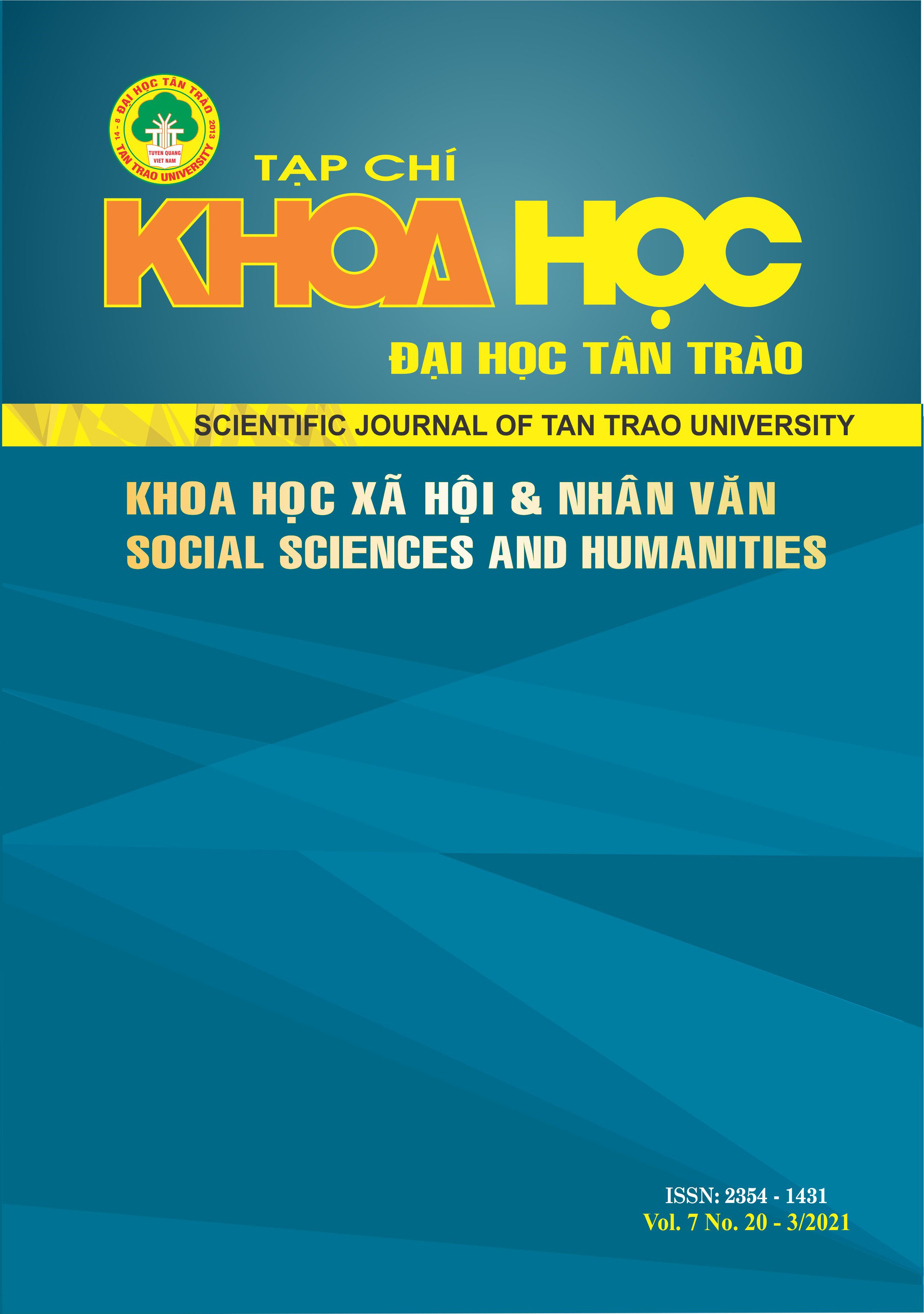THE WAYS TO ORGANIZE THE SOCIAL LIFE OF MUONG PEOPLE IN HOA BINH PROVINCE: THE TRADITIONAL TO THE MODERN
DOI:
https://doi.org/10.51453/2354-1431/2021/495Keywords:
Social system, Lang Dao, Muong, land.Abstract
The social organization of the Muong can be divided into three stages: Stage 1: Organizing the social life of the Muong before 1945; Stage 2: Organizing the social life of the Muong after 1945 to before renovation (before 1986); Stage 3: Organizing the social life of the Muong people today (after 1986). Each stage shows typical differences in the organizational structure of the Muong's social life, leading to changes in social relationships. By the method of document analysis, comparison and ethnographic fieldwork, the author has systematically synthesized how the social life of the Muong is organized through each historical period, through which the The author clarifies the specific social relationships in each organizational form of social life.
Downloads
References
[1] Mai, B.T. (1999). The Muong ethnic group in Vietnam. National Cultural Publishing House.
[2] Khue, L.Q. (2007). Traditional Muong cultural identity and current changing trend - Through Muong culture survey in Hoa Binh province. Academy of Journalism and Communication. 6974.
[3] Duong, M (1962). Society and land in Muong area before the August Revolution. Historical research journal, 3:49-56
[4] Lap, N.Q. (2005). Muong ethnic.Kim Dong House
[5] Chi, N.T. (1996). Contribute to ethnic culture research. Information culture Publishing House.
[6] Hai, N. (2012). Dissipate Muong culture in Hoa Binh. Information and communication Publishing House.
[7] Linh, H.V. (2006). The traditional social organization and its changes in the Muong Thanh Son, Phu Tho. Institute of Ethnology.
[8] Chi, T. (2012). The Muong ethnic group in Hoa Binh. Vietnam folk arts association.
Downloads
Published
How to Cite
Issue
Section
License

This work is licensed under a Creative Commons Attribution-ShareAlike 4.0 International License.
All articles published in SJTTU are licensed under a Creative Commons Attribution-ShareAlike 4.0 International (CC BY-SA) license. This means anyone is free to copy, transform, or redistribute articles for any lawful purpose in any medium, provided they give appropriate attribution to the original author(s) and SJTTU, link to the license, indicate if changes were made, and redistribute any derivative work under the same license.
Copyright on articles is retained by the respective author(s), without restrictions. A non-exclusive license is granted to SJTTU to publish the article and identify itself as its original publisher, along with the commercial right to include the article in a hardcopy issue for sale to libraries and individuals.
Although the conditions of the CC BY-SA license don't apply to authors (as the copyright holder of your article, you have no restrictions on your rights), by submitting to SJTTU, authors recognize the rights of readers, and must grant any third party the right to use their article to the extent provided by the license.





